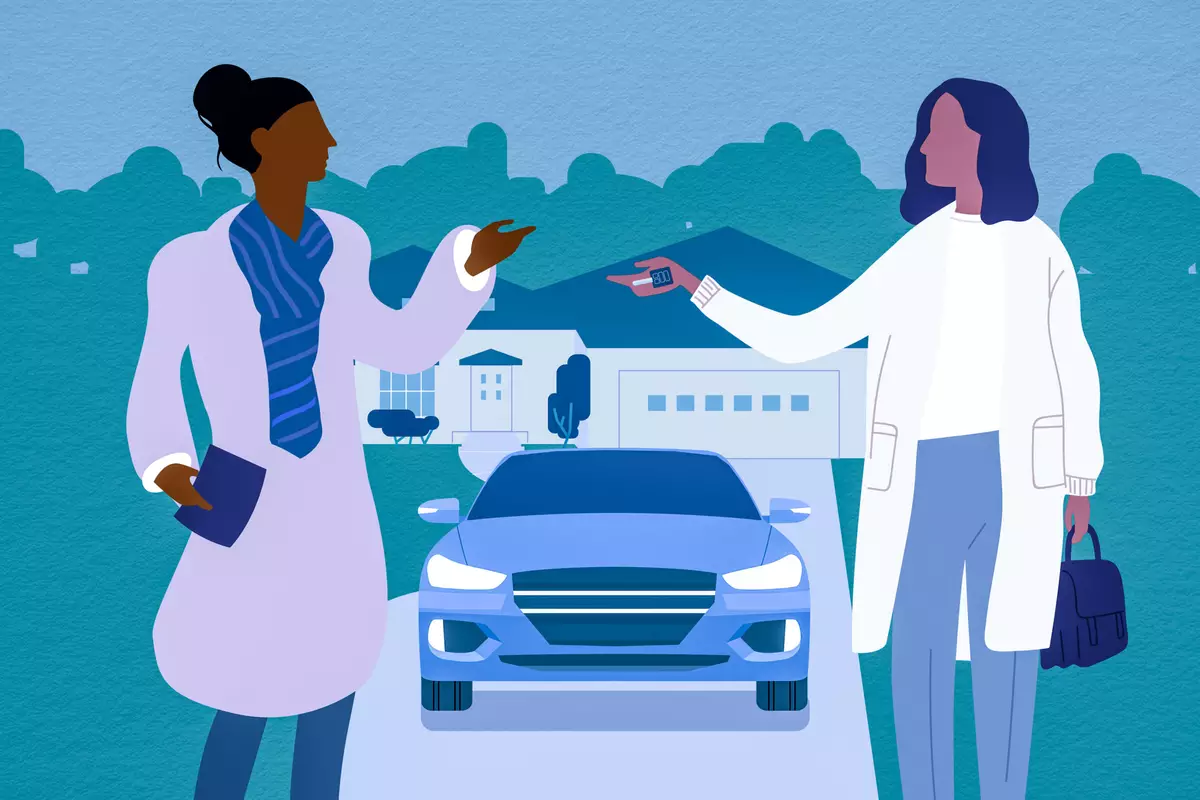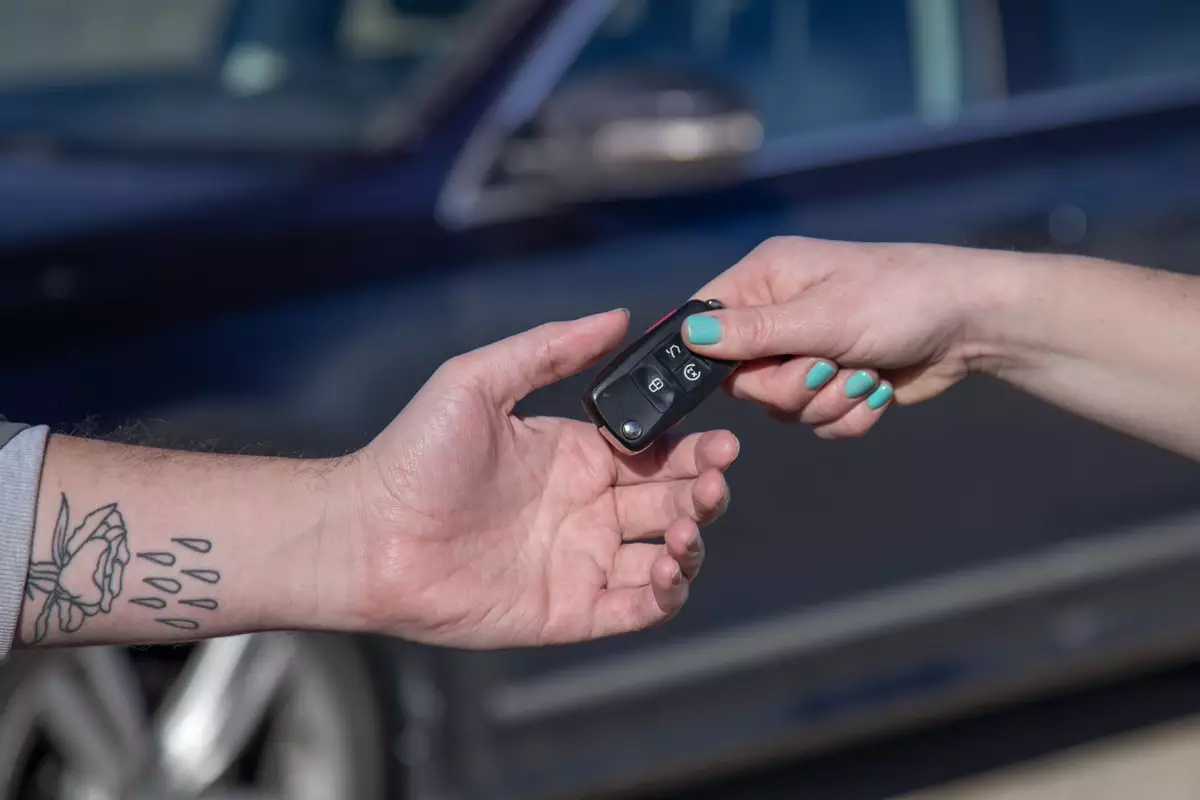How to Sell Your Car Privately: 5 Tips to Simplify the Process


Whether you’re looking to replace your car or offload an extra one to take advantage of elevated used-car values, selling a vehicle privately can get you more money than trading it in to a dealer. The financial gain comes with some tradeoffs, however. You’ll need to dedicate more time and effort to the selling process, and there are more risks involved from screening potential buyers, going on test drives and taking payment. Learn how to navigate each step of the process to ensure the extra effort pays off.
Related: Should You Trade in Your Car or Sell It Privately?
1. Determine Your Car’s Value
Many factors influence a car’s value. A vehicle’s age, mileage and condition are important, but external variables including market conditions, fuel prices and brand appeal also play a role. For example, we’re still feeling the effects of the pandemic-era inventory shortages, where fewer cars being built resulted in fewer cars being sold and (more importantly) leased. The resulting lack of late-model trade-ins and lease returns has pushed the average age and mileage of used cars upward, and prices have gone up with them. Used vehicles that were listed for between $10,000 and $19,000 just four years ago on Cars.com were in similar condition to those listed for $10,000 more in April 2025. So, if you have a lower-mileage car in good condition, now could be a great time to sell. To determine the vehicle’s value, look at comparable used-car listings or get the vehicle appraised by a dealer or used-car chain like CarMax. You can also track your car’s value using Cars.com’s Your Garage tool.
2. Create an Ad to Connect With Shoppers

Next, you’ll need to advertise your vehicle to potential buyers. First, photograph the car and create an ad using online tools like the Cars.com sell-it-yourself option. Once you’ve highlighted your car’s strong suits in the ad, you’ll need to communicate with potential buyers via email and phone calls. Use this opportunity to screen shoppers, and beware of any red flags like a buyer who only wants to communicate through email or text and refuses to speak by phone. You’ll want to pitch your vehicle’s best attributes while being honest about its condition. Shoppers don’t expect a used car to be in perfect shape, but they do expect its condition to match the description.
3. Get the Paperwork Ready
Selling privately takes more forethought when it comes to paperwork than trading in to a dealer who will usually handle this step. You’ll need to have all the key documents, including the vehicle’s title and bill of sale, which serves as a receipt for the transaction; the bill of sale is recommended for a private car sale and may be required in select states. If you still owe money on the vehicle and the title is in the lienholder’s possession, you’ll need to contact your lender to get the payoff amount and instructions for completing the transaction.
While not mandatory, collecting extra documents like a vehicle history report, maintenance records and extended warranty details may make the vehicle more desirable, helping you get the most money for it or sell it faster.
4. Sell It Safely: Test Drives and Payment

Selling a car privately also involves more uncertainty than trading in or selling to a dealer. From meeting strangers for test drives to transferring ownership and taking payment for the vehicle, you’ll want to prioritize your own safety and security as well as the vehicle’s.
When setting up a test drive, speak with the potential buyer over the phone, arrange a meeting spot in a public place and bring a friend along, if possible. If the shopper insists on taking the test drive alone, be sure to get a photo of their driver’s license information before handing over the keys.
Once you have an acceptable offer on the table, you’ll need to transfer ownership and take the buyer’s payment securely. Communicate your preferred method of payment to the buyer — a cashier’s check or cash is best since personal checks carry more risk. Never accept a check that is more than the asking price for the vehicle. A common scam involves the buyer sending a check for more than the purchase price and asking the seller to return the difference back to them, as these checks are typically counterfeit. Do not transfer the vehicle’s title until you’ve received the full cash payment or the buyer’s check has cleared.
5. Tie Up Loose Ends
Some private-sale scenarios require a few additional steps to complete the transaction. In the case of an out-of-town buyer, you’ll need to arrange the vehicle pickup or consider using a vehicle delivery service to transport it. Prices vary based on the length of transport and the vehicle’s weight, but you can expect it to cost between $1,000 and $2,000, on average.
In most states, the vehicle’s license plates are required to stay with the seller, so you’ll want to remove them before handing over the vehicle to its new owner. California is one exception, however, and requires that license plates stay with the vehicle.
Select states also require that the seller notifies the Department of Motor Vehicles within a specified number of days after the vehicle is sold privately. For example, California gives sellers five days to complete a Notice of Transfer and Release of Liability form, while Illinois asks sellers to complete a Report of Sale form as soon as the vehicle sale is final. Check with your state’s DMV for any paperwork requirements for a private vehicle sale. Lastly, notify your insurance company and ask for the sold vehicle to be removed from your policy.
More From Cars.com:
- How to Protect Yourself Against Fraud in Car Sales
- Can You Sell a Car Without a Title?
- How Do I Sell an Older Car?
- What Do the New Tariffs Mean for Car Buyers?
- Sell Your Car on Cars.com
Related Video:
Cars.com’s Editorial department is your source for automotive news and reviews. In line with Cars.com’s long-standing ethics policy, editors and reviewers don’t accept gifts or free trips from automakers. The Editorial department is independent of Cars.com’s advertising, sales and sponsored content departments.

Former News Editor Jane Ulitskaya joined the Cars.com team in 2021, and her areas of focus included researching and reporting on vehicle pricing, inventory and auto finance trends.
Featured stories




